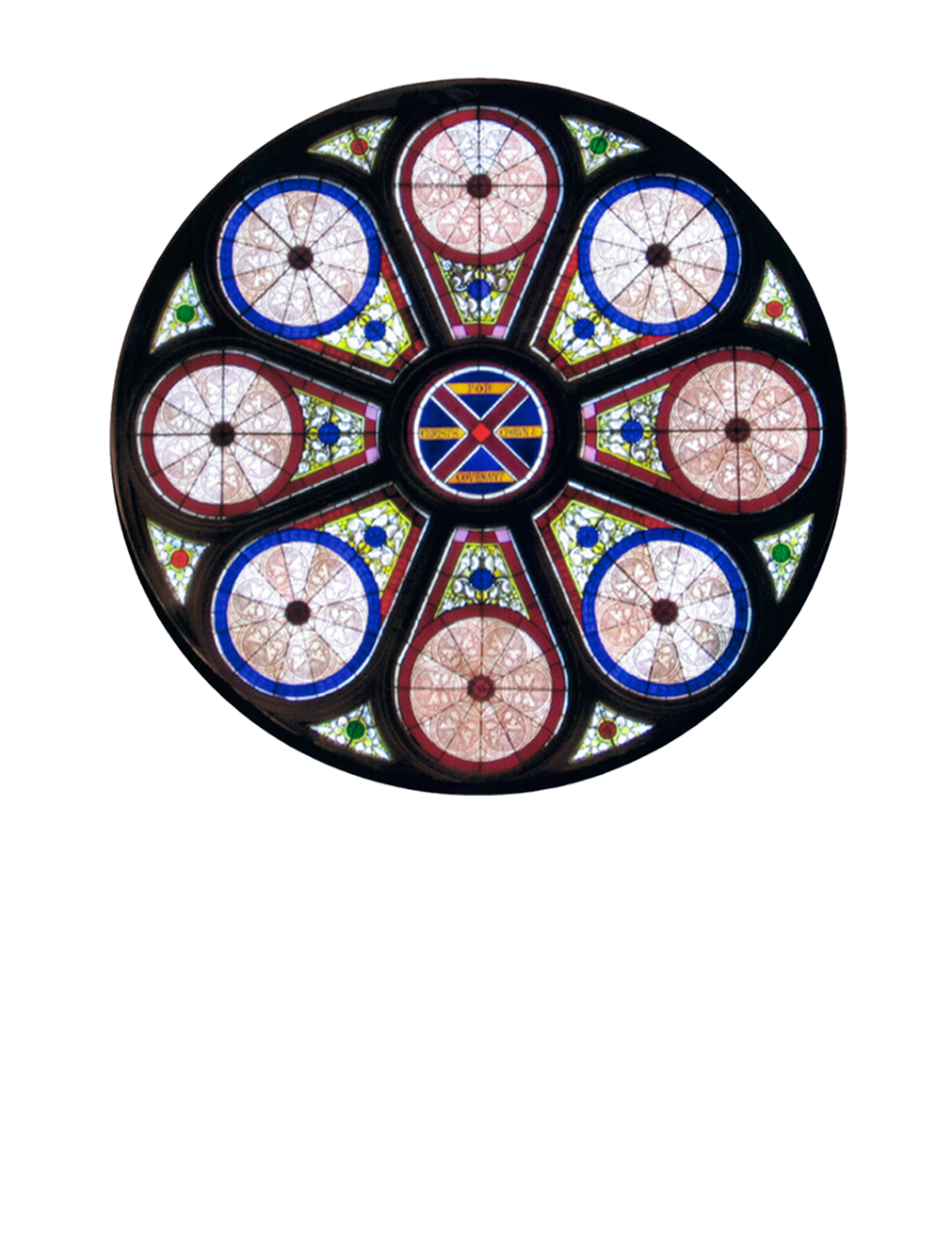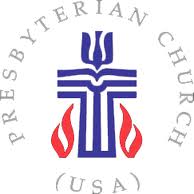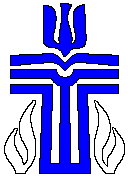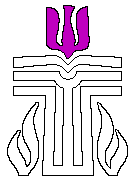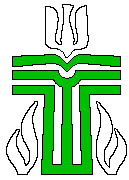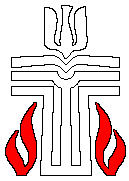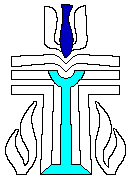The seal is comprised of the symbol, the basic components of which are cross, scripture, a descending dove at the upper part of the cross, and flames on either side of the lower part of the cross, and the name of the denomination, Presbyterian Church (U.S.A.), encircles the symbol. It was designed by Malcolm Grear and Associates.
In experimenting with the basic lines and shapes of the cross, the contour of a book began to emerge in the horizontal section, and the two center lines of the cross became the representation of an open book. This integration of the horizontal dimensions of the cross with the book motif highlights the emphasis which the Reformed tradition has placed on the role of Scripture as a means of knowing God’s word.
The slightly-flared shape of the Celtic cross also makes possible the transforming of the uppermost section into the shape of a descending dove. As a symbol of the Holy Spirit, the dove is intimately tied to the representation of the Bible, affirming the role of the Spirit in both inspiring and interpreting Scripture in the life of the church. The dove also symbolizes Christ’s baptism by John and the peace and wholeness which his death and resurrection bring to a broken world.
Beneath the image of the book is the suggestion of a lectern or pulpit, which captures the important role of preaching in the history of Presbyterian worship.
Integrated into the lower part of the design are flames which form an implied triangle, a traditional symbol of the Trinity. The flames themselves convey a double meaning: a symbol of revelation in the Old Testament when God spoke to Moses from the burning bush and a suggestion of the beginning of the Christian church when Christ manifested himself to his apostles at Pentecost and charged them to be messengers of the good news of God’s love.
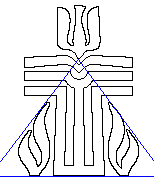
The triangle also suggests the nature of Presbyterian government, with its concern for balance and order, dividing authority between ministers of the Word and laypersons and between different governing bodies. This understanding of the church was based in part on an important idea in Reformed theology, the covenant, which God establishes with people to affirm God’s enduring love and to call us to faith and obedience to Jesus Christ.
Looking more closely at some of the visual components of the design, viewers may discover elements that seem to fuse with some of the more obvious theological symbols. In the shape of the descending dove, for example, one might also discern in the body of the bird, the form of a fish, an early-Christian sign for Christ, recalling his ministry to those who hunger. For some, the overall design evokes the calligraphy of Hebrew and Greek manuscripts. Others have seen a baptismal font or a communion chalice (cup).
